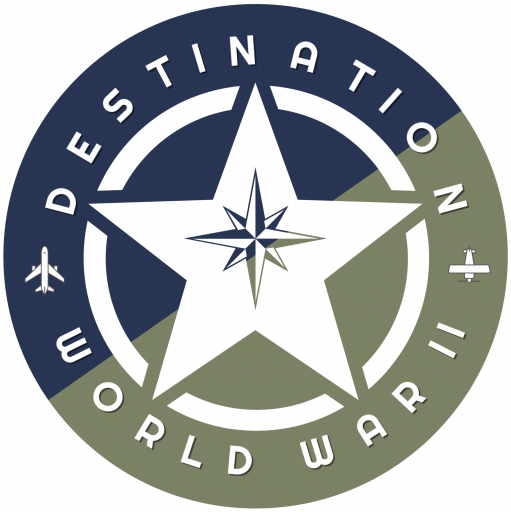Belgium is a small country that’s (unfortunately) big on war history and, in that sense, Bastogne is its capital. Some of World War II’s most consequential events took place here and in the surrounding areas. As a result, there are so many incredible WWII sites in Bastogne for you to check out. I’ve laid out all of Bastogne’s museums, monuments, and other historical sites for you so you won’t miss a one. Enjoy!
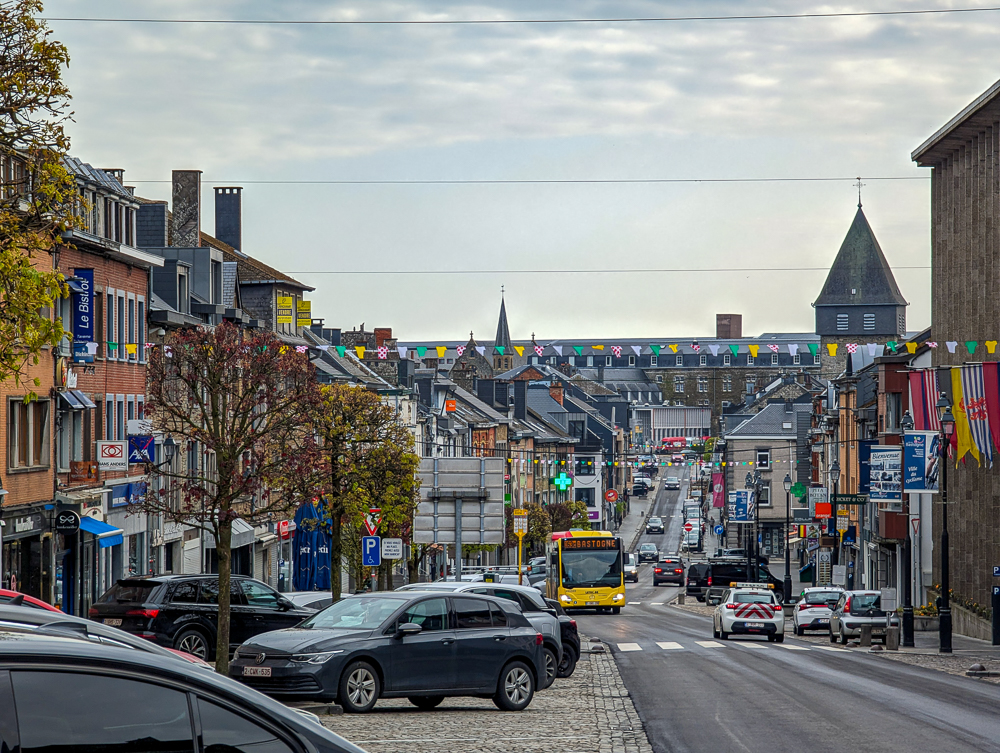
For all the WWII sites to see in Belgium (the whole country, that is), click that link.
Bastogne During World War II
Bastogne is an otherwise small, quiet town near Belgium’s border with Luxembourg. But in the winter of 1944/1945, it was the knife edge on which Nazi Germany and the Western Allies fought desperately for advantage in the European war. Here are some of the key points to know before visiting these WWII sites in Bastogne:
Invasion
As part of Hitler’s broader invasion of the “low countries,” Nazi Germany invaded Belgium on May 10, 1940. (Along with France, Luxembourg, and the Netherlands.) Unable to withstand Germany’s blitzkrieg style of war, Belgium’s forces held out for a mere 18 days.
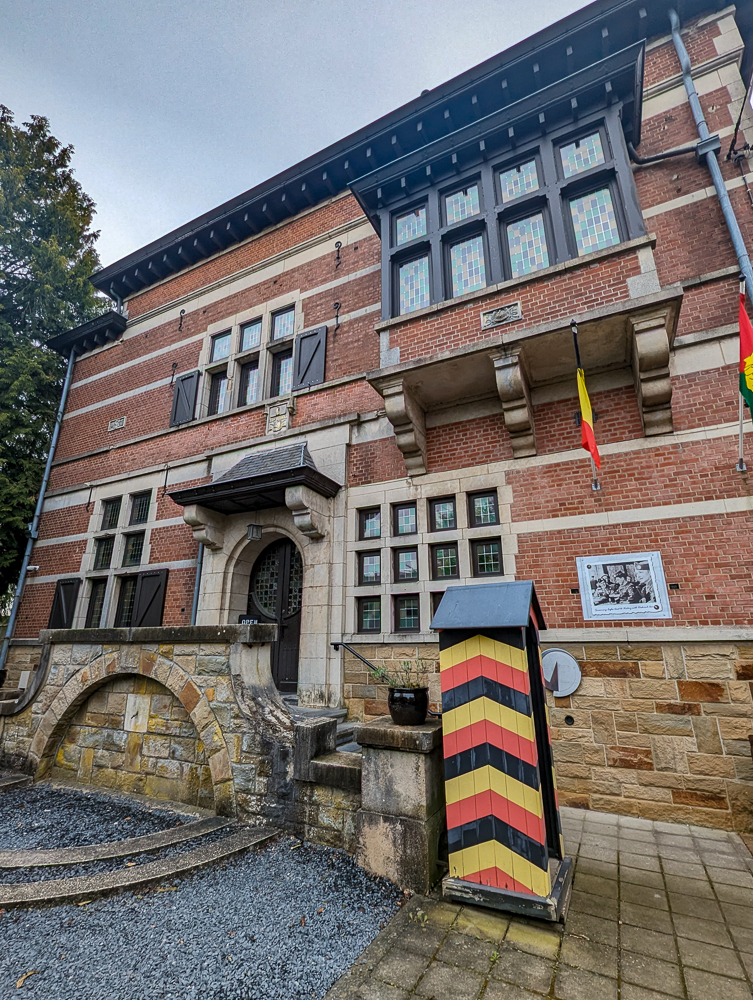
Occupation
Belgium surrendered unconditionally and Nazi Germany thus occupied the country for the next four years. The occupation of Belgium was little different from that of other countries. Its citizens suffered violent oppression and Jews were deported to concentration camps. Some Belgians collaborated with the Nazi regime while many others joined resistance networks.
The Allies liberated the town of Bastogne on September 10, 1944 which was thereafter held by the US 28th Infantry Division. Though the roads in and out of Bastogne were critical for German logistics, the Allies weren’t overly concerned about any potential attacks.
For the list of WWII sites in Brussels, see my guide in that link.

Battle of the Bulge
Regardless, on December 16, 1944, Nazi Germany launched a desperate, last-resort counteroffensive in an attempt to seize the Allied-controlled harbor at Antwerp. To do so, they’d need to split up, encircle, and destroy the Allied armies that controlled the roads running through eastern Belgium.
This desperate move–Germany’s last major offensive on the western front–was the Ardennes Offensive. This has since become known as the Battle of the Bulge, so named for the “bulge” this attack created in the American front lines. (It makes sense when you look at the map.) Nazi Germany referred to this as Operation Wacht am Rhein or “Operation Watch on the Rhine.”

The Battle of the Bulge took place in Belgium’s dense Ardennes Forest region near the town of Bastogne. It lasted from December 16, 1944 until January 25, 1945. With troops surrounded, freezing, and quickly running out of supplies, the Allied situation seemed hopeless. Still, they refused to surrender.
George Patton’s Third Army eventually arrived and relieved the troubled troops. The clearing weather allowed aircraft to finally deliver critical supplies. Still, the Battle of the Bulge would be the Americans’ largest and bloodiest single battle of the entire war.
Siege of Bastogne
During the Battle of the Bulge, the outnumbered 28th Infantry Division and the newly arrived 101st Airborne Division defended Bastogne as long as they could. German forces eventually surrounded the town on December 20, but were only able to hold it until elements of Patton’s Third Army showed up six days later.

Check out my 10-day Belgium WWII itinerary here in case you’d like to see much more of what this country has to offer.
Battle of the Bulge Books
If you want to dig deeper into this fascinating history, pick up one (or all) of these books:
- Band of Brothers by Stephen Ambrose – The story that started in Normandy and ends at the Eagle’s Nest also follows the men of the 101st Airborne Division throughout their ordeals in Belgium.
- The Longest Winter by Alex Kershaw – Subtitled: “The Battle of the Bulge and the epic story of World War II’s most decorated platoon”
- Seven Roads to Hell by Donald R. Burgett, a member of the 101st Airborne describing his experiences during the Battle of the Bulge
- See many more Battle of the Bulge books here.
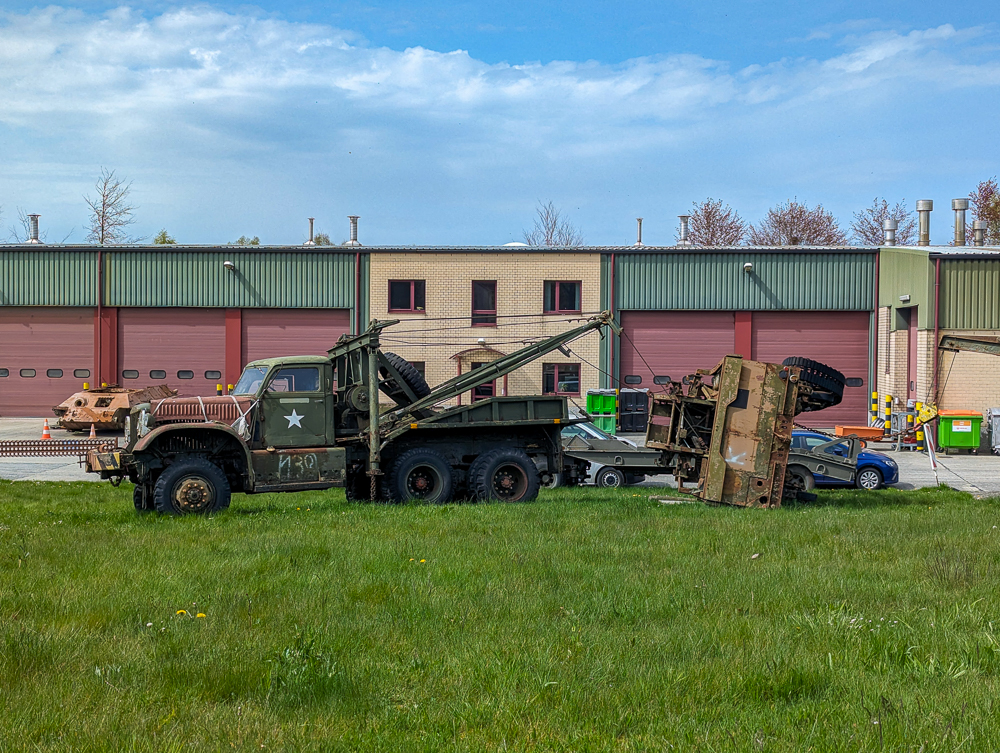
Map of WWII Sites in Bastogne, Belgium
This map contains all the WWII sites in Bastogne I mention in this post. To save this map: Click on the star ⭑ next to the map’s title to save in your Google Maps. To use this map: When you get to Bastogne, open Google Maps on your phone, click “Saved” at the bottom, then click “Maps.”
WWII Museums in Bastogne
There are several meaningful, eye-opening, and even borderline hilarious museums among the WWII sites in Bastogne. (Yes, you can laugh in Bastogne!) Check them all out here:
1. 101st Airborne Museum
Bastogne’s 101st Airborne Museum ending up being my favorite WWII museum in Belgium. This is an incredibly well put together museum dedicated to the men of the US 101st Airborne Division. It’s located in the center of Bastogne inside a multi-level building that was occupied by German forces throughout the war.
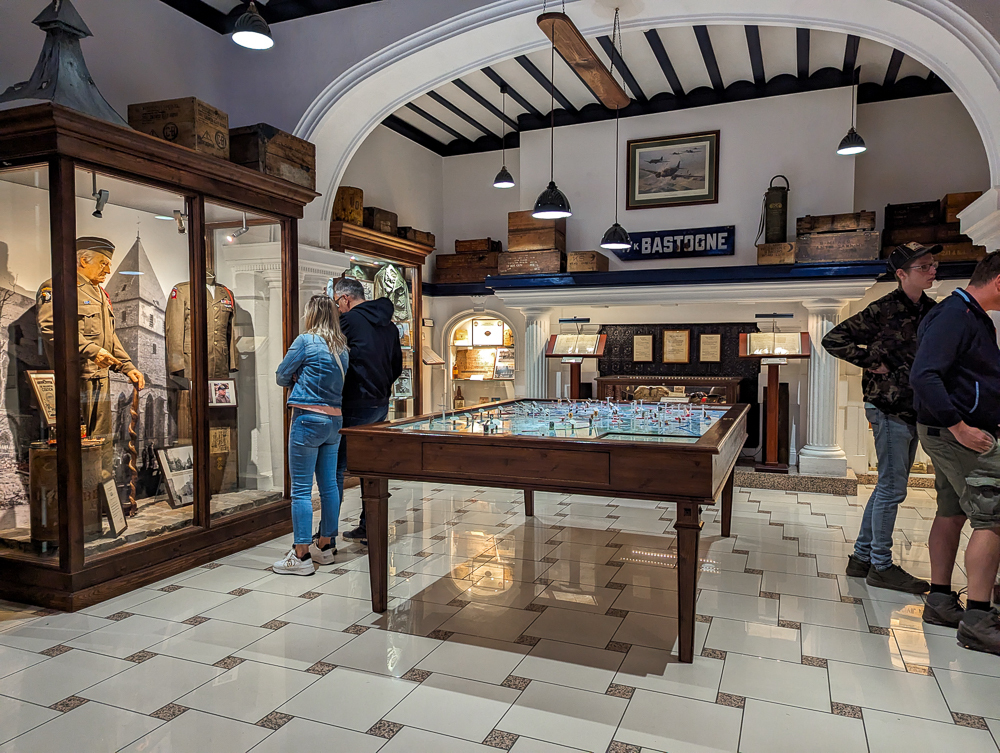
This museum contains an enormous collection of unique memorabilia and personal stories related to the 101st Airborne and the Battle of the Bulge. The displays are life-size replicas of actual historical photos; there’s video footage, dioramas, and tons of other historical recreations.
One of the most interesting parts of this museum is the bombing simulator. Head down to the basement which resembles the basement of a local house during the war. The simulations really give you a sense of what it must’ve felt like to be a civilian during a bombing raid.
Visitor information: Get the latest opening hours, admission costs, and more here: 101airbornemuseumbastogne.com


2. Bastogne War Museum
The Bastogne War Museum is the most preeminent World War II museum in Belgium and definitely the largest of the WWII sites in Bastogne. It offers what they call a “total immersion in history” through their plethora of exhibits on several topics. There are also small theaters every so often where you can watch short films that help bring the museum’s content to life.
This museum does a great job of explaining the war from start to finish. It does highlight the Belgian side of the war but exhibits so much beyond that. You also get a free audio guide with your admission that explains tons more.

Note: The Bastogne War Museum also incorporates two other museums into its purview: the Bois Jacques forest and the new Bastogne War Rooms. You can purchase a combination ticket which gets you access to all three.
Visitor information: Get the latest opening hours, admission costs, and more here: bastognewarmuseum.be

3. Bastogne Barracks
Of all the WWII sites in Bastogne, the Bastogne Barracks is the absolute best if you’re into tanks and other World War II vehicles and heavy equipment. Above all else, this museum includes two massive warehouses: The “Mechanized Warfare” gallery and the “Battle of the Bulge” gallery (newly opened in 2022).
Both contain huge collections of tanks, vehicles, and machinery related to the Second World War and from all the major players–Germany, France, US, Soviet Union, Great Britain, and more. You may even luck out and visit when their Vehicle Restoration Center is open.
Visitor information: Get the latest opening hours, admission costs, and more here: bastognebarracks.be

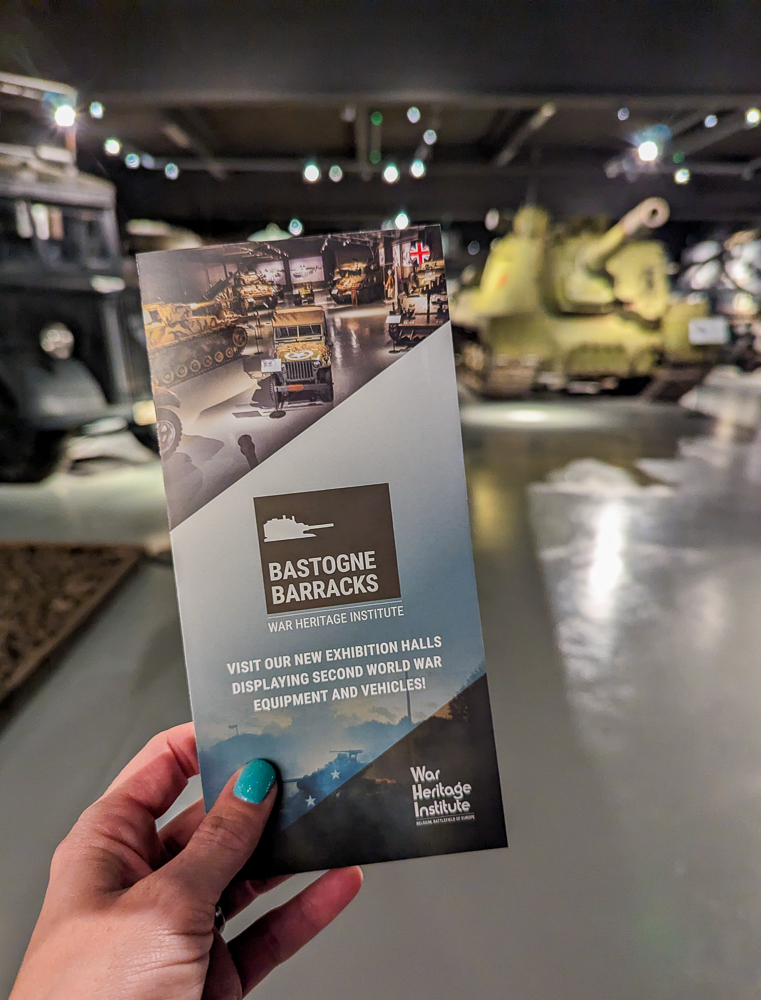


4. Bastogne War Rooms
Since the names are starting to get confusing, you can simply refer to this one as the “Nuts Museum.”
The Bastogne War Rooms just opened in February 2024 which makes it the newest of all the WWII sites in Bastogne. It houses the historic cellar “where we said NUTS” and is an extension of the Bastogne War Museum. (Get the combo ticket!) This museum is relatively small and won’t take you too long to visit.
On December 22, 1944, flailing German officers reached out to US Brigadier General Anthony McAuliffe with a letter encouraging the Allied troops to surrender. Refusing to do so, McAuliffe famously replied: “Nuts!” (In other words, No way!) And that was that. The Americans continued the fight and… I think you know the rest.
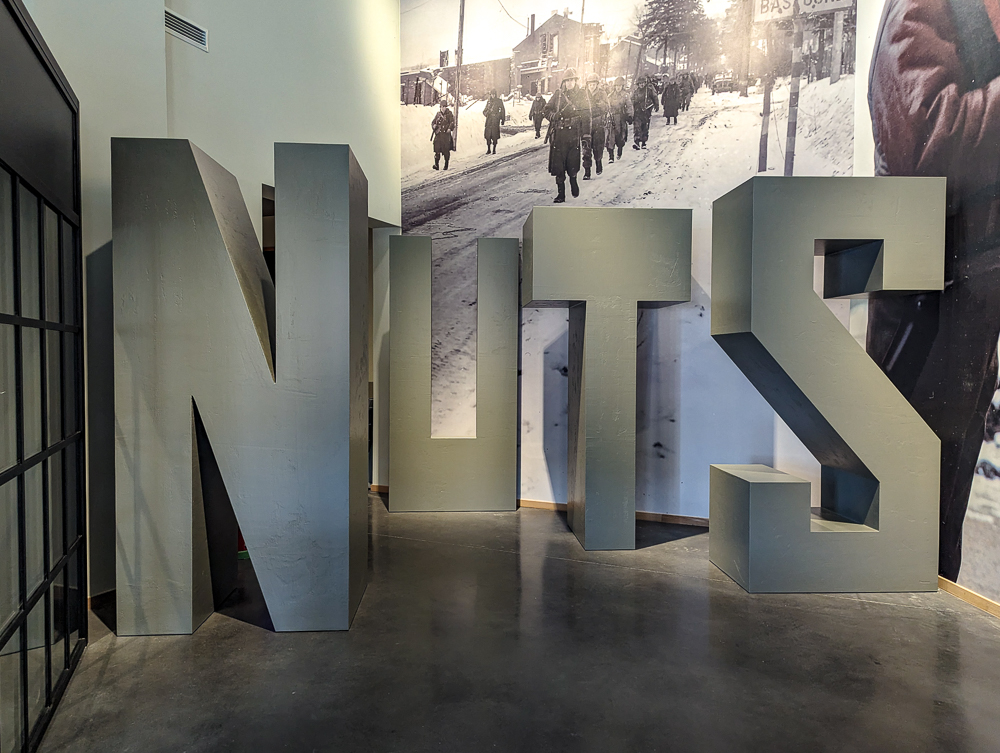
The Bastogne War Rooms largely focuses on this one (hilarious) event. You can see the room where the whole thing took place and learn some of the history behind it in a holographic reenactment. What this museum really honors though is what that reply symbolized–the refusal to give up, the American troops’ heroic resistance in the face of terrible odds.
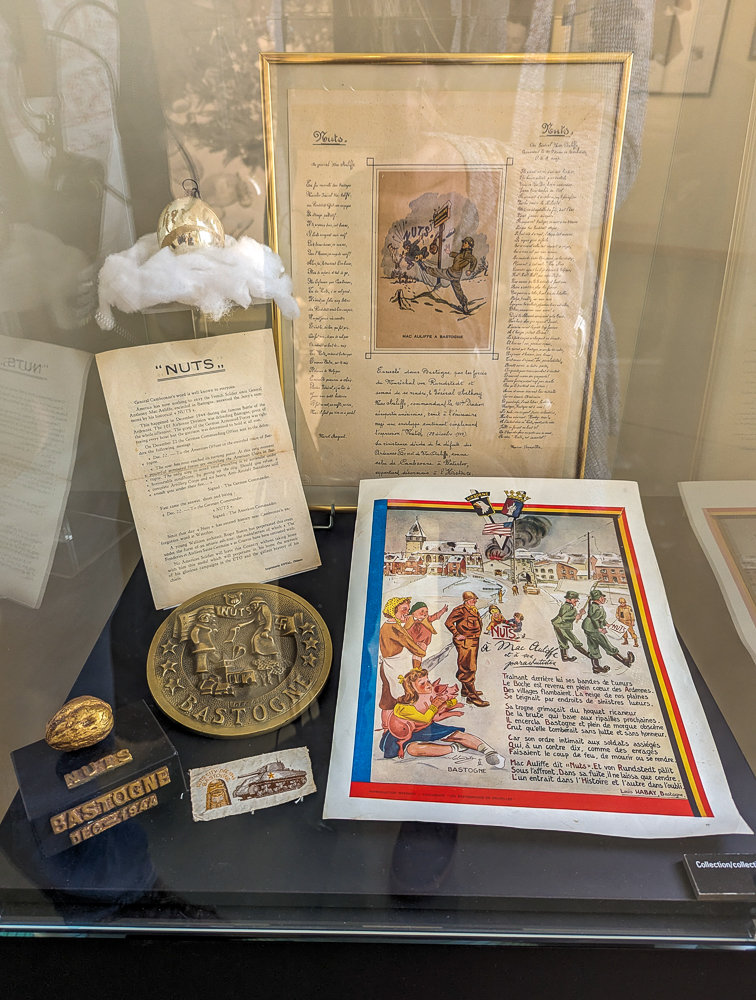


5. Bois Jacques Battlefield
For anyone looking to explore Battle of the Bulge history, the Bois Jacques battlefield site should top your list of WWII sites to visit in Bastogne. (Especially if you’re a Band of Brothers fan.) In this small forest, you can still see the famous foxholes used by the men of Easy Company and the 101st Airborne Division.
The historic site at Bois Jacques is part of the Bastogne War Museum so your ticket there gets you in here too. Once here, you’ll find a small parking lot, a self-accessed entry gate, and the empty forest.

There’s only a little bit of information available on site, but what you really want to do is download the official Bois Jacques app. Personally, I groan every time I have to download a new app that I’m probably only going to use once, but this one is absolutely worth it.
Besides being the only real source of information here, this app also provides an augmented reality experience that helps you envision the forest the way it looked (and sounded) during the Battle of the Bulge. Stand next to one of the marker signs (on the trees) and the app will show that exact view in 1944. Some of the spots include historical reenactments to help paint a fuller picture. It really is so neat!
(You can download it here for Android and here for Apple, but it won’t work until you get to the forest. There are also QR codes at the entrance for you to download it if you have cell service.)
Visitor information: Get the latest opening hours, admission costs, and more here: bastognewarmuseum.be
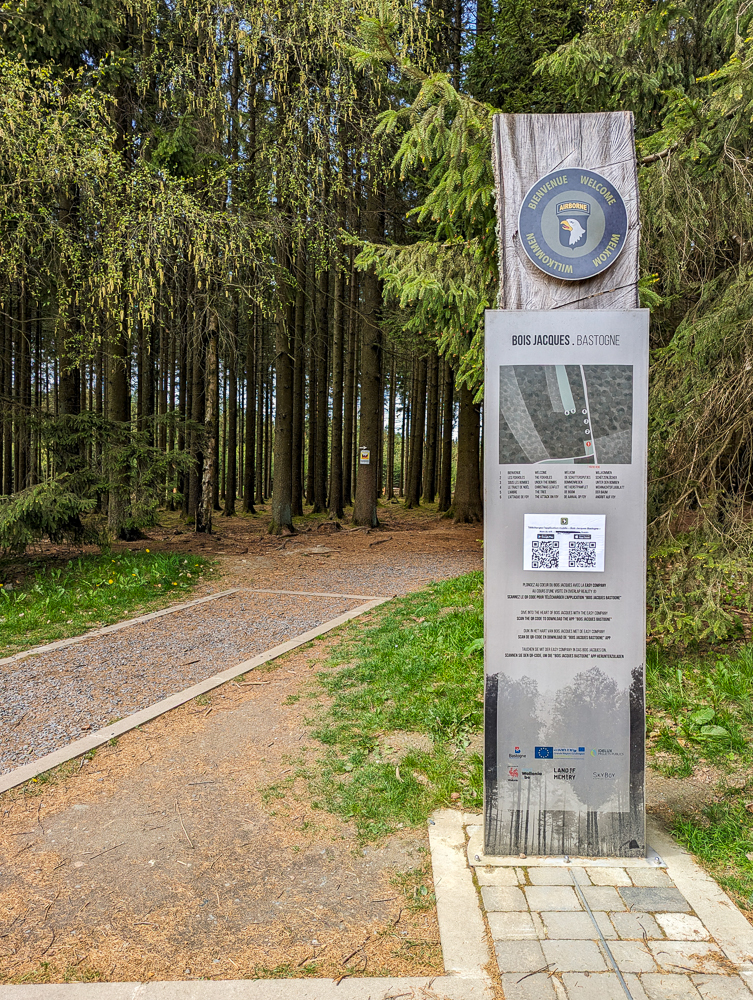



WWII Monuments & Memorials in Bastogne
Beyond museums, there are several meaningful memorials and monuments included in the WWII sites in Bastogne as well. Check them out here:
6. Mardasson Memorial / Battle of the Bulge Monument
Next to the Bastogne War Museum you’ll find the Mardasson Memorial–the largest monument dedicated to American troops killed during the Battle of the Bulge. Also called the Battle of the Bulge Monument, its name comes from the hill on which it stands–Mardasson Hill–the farthest point the German advance reached.
This monument is shaped like a 5-pointed star and has a large atrium in the center. Each of the 48 states is represented here along with the participating battalions. You can head up to the top of the memorial via some spiral staircases, or head down into the crypt.
(These spots were closed during my visit in May 2023 as they were being renovated ahead of the 80th anniversary of the Battle of the Bulge. You should have better luck!)


7. Easy Company Memorial
On the road from the Bastogne War Museum to the Bois Jacques you’ll find the 101st Airborne Easy Company Memorial. There is a small area to pull-off the road and park.
It contains the names of the Easy Company men who died here during the Battle of the Bulge along with an etched memorial scene. The right side of the memorial tells the story of what those men endured here.

8. Former Aid Station and Renée Lemaire Memorial
Just about a block away from Bastogne’s main square you’ll find a large Asian restaurant called Cite Wok. Out front, posted on the wall near the entrance (facing the street) is a memorial plaque to Renée Lemaire and this site’s use during the war.
Renée Lemaire has become known as the Angel of Bastogne and her story here was featured in the Band of Brothers miniseries (episode 6). She has since become the poster child for battlefield nurses here in Bastogne.
The Cite Wok now stands on the site of the former aid station of the 10th Armored Division. It was here where Renée Lemaire (a volunteer nurse) and more than 30 wounded American troops were killed by a German bomb on December 29, 1944.
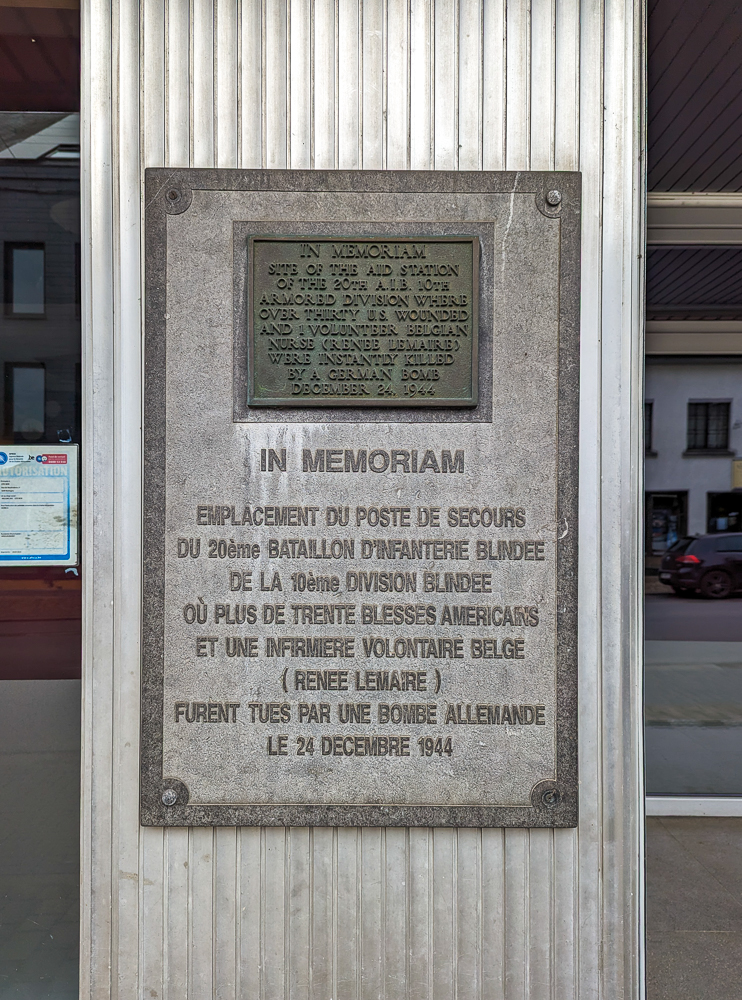
9. Nurses of Bastogne Memorial
On the drive from the main square to the Bastogne War Museum you’ll pass by the Nurses of Bastogne Memorial. When you see the collection of black iron bars standing alone in a patch of grass, you’re here. Continue driving a little farther and you’ll be able to pull onto the road that winds around behind it.
There’s an informational plaque about it next to the parking area where you’ll be able to read about Bastogne’s two most prominent nurses–Renée Lemaire and Augusta Chiwy.

Renée Lemaire you just read about, but you might not know about Augusta Chiwy. She too was a volunteer nurse during the Siege of Bastogne who saved many lives. She was working at the same aid station as Renée Lemaire when it was bombed, but she survived. After the war, she rarely spoke about her war experiences but continued working in the medical field, treating those with spinal injuries.
She married a Belgian soldier, had two children, and died on August 23, 2015. She’s buried near Renée Lemaire at the Bastogne cemetery, across the street from the Bastogne Barracks.


10. Tombe for the Defence of Bastogne
Just past the Nurses Memorial you’ll find a large stone memorial known as the Tombe for the Defence of Bastogne. This monument is dedicated to Belgian Corporal Emile Cady who was killed here on May 10, 1940 during the initial German invasion of Belgium. It also serves to honor the bravery of all those who fought against the Nazi regime during this time.
Cady was a member of the Belgian 2nd Chasseurs Ardennais Regiment (the “Ardennes Hunters”) who were tasked with defending Bastogne during the invasion.

11. Liberty Road Markers
The Liberty Road is a route that starts in Normandy and follows the route taken by Allied forces from D-Day onwards. From Utah Beach in Normandy, it continues on through northern France and eventually ends here in Bastogne.
All every kilometer along the way you’ll find a stone marker like the ones below for a total of 1,147 of them. You can see the last three of them here in Bastogne:
- Km 1145 is next to the Sherman tank in McAuliffe Square
- Km 1146 is outside the Bastogne Youth House (Asbl Anim’Jeunes)
- And Km 1147 (the last one) is on the road leading up to the Bastogne War Museum
The design represents the torch of liberty rising from the sea and being carried eastward. It has 48 stars for the 48 states along the top. This route officially opened in 1947 and has evolved greatly over time.
You can find more information on the Liberty Road here: liberationroute.com
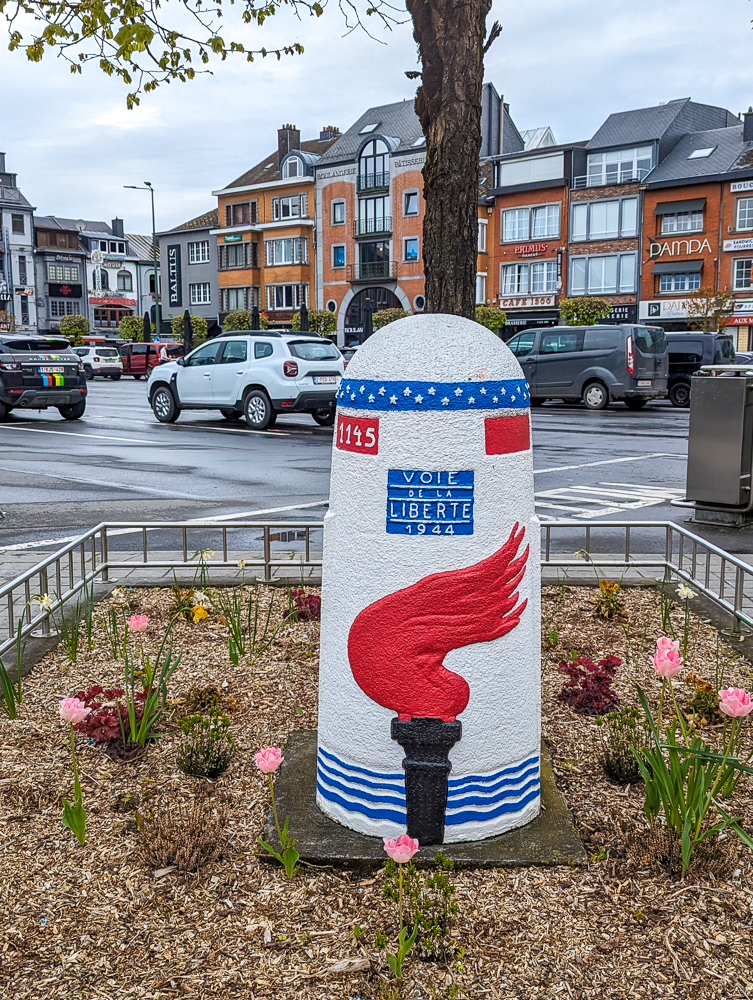

12. General George S. Patton Memorial
Bastogne’s Monument Patton is one of the… weirder WWII sites in Bastogne, but still, here it is. It understandably honors General George S. Patton whose Third Army put an end to the Siege of Bastogne in December 1944. It’s large, imposing, and features an almost zombie-like portrait of General Patton.
You’ll find it taking up a large corner of a parking lot outside what I believe is an apartment building, with a post office and convenient stores on the ground floor. It’s flanked by American and Belgian flags and features some informational signage next to it.


13. General McAuliffe Square
At the main center of Bastogne you’ll find McAuliffe Square, named for General Anthony McAuliffe, acting commander of the 101st Airborne Division during the Battle of the Bulge. In December 1944, he famously responded “Nuts!” to Nazi Germany’s surrender ultimatum. A statue of him stands in the square’s southern corner.
You’ll see photos of him and miscellaneous dedications all over Bastogne, but McAuliffe Square is the most notable one. This central area is lined with restaurants, bars, coffee shops, and other such establishments. A large parking lot takes up most of the space, but you can also find some other interesting WWII relics, listed below.

14. Foy Temporary American Cemetery
Close to the entrance to the Recogne German War Cemetery you’ll find a large monument marking the former, temporary location of the American Cemetery. Here between the villages of Foy and Recogne, 2,700 American soldiers (and 3,000 Germans) were buried following the Battle of the Bulge.
As it goes, after the war’s end, many of the American casualties were repatriated to the US and still others were moved to other cemeteries in Belgium and Luxembourg. The German cemetery at Recogne remained where it was (more about this below).
This monument serves to honor the men who were originally buried here. It features two peace doves, the white cross and star of David used to mark graves in the American war cemeteries, and some inscriptions in both English and French.


Other WWII Sites in Bastogne
The following are a few more of the WWII sites in Bastogne worth checking out but that don’t fit into the other categories.
15. 11th Armored M4 Sherman Tank
Next to General McAuliffe’s statue in McAuliffe Square you’ll find an M4 Sherman Tank used by the 11th Armored Division during the Battle of the Bulge. The plaque below it reads: “This tank, knocked out in December 44, recalls the sacrifice of all the fighters for the liberation of Bastogne and Belgium.”
There are a couple more plaques on its base, one of them dedicated to the 406th Fighter Group. The tank is fully intact and even has an elevated walkway around it so you can get a better view. You’ll often see kids climbing on it as well.

16. Recogne German Military Cemetery
While you’re out exploring the WWII sites in Bastogne, I highly recommend stopping by the Recogne German Military Cemetery if you’ve never been to one before. It’s not exactly an uplifting experience, but it is a worthwhile one. If only to note the contrast between these and the pristine, bright, well-kept American and Commonwealth war cemeteries throughout Europe.
Where Allied graves are marked with sparkling white crosses or headstones, German war graves (in Allied territory, that is) are typically marked by heavy black stone crosses. Most of these graves are shared and many of them are anonymous. Instead of highly manicured and landscaped spaces, German war cemeteries tend to be dark and covered by trees.
Reading the guestbook here is always an interesting experience too.
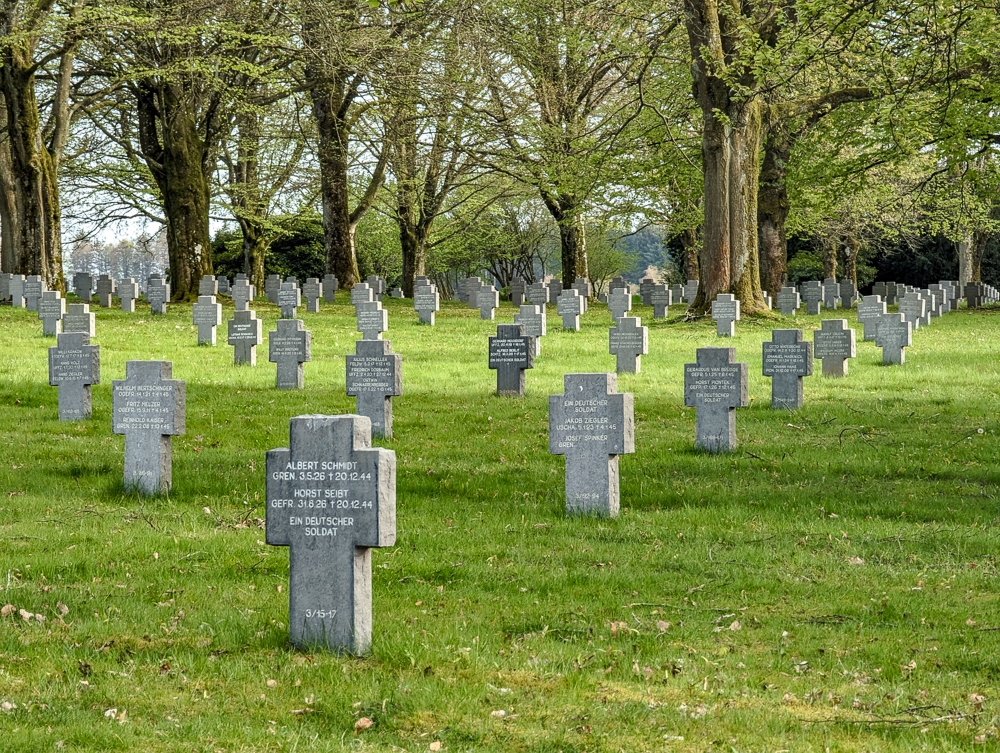
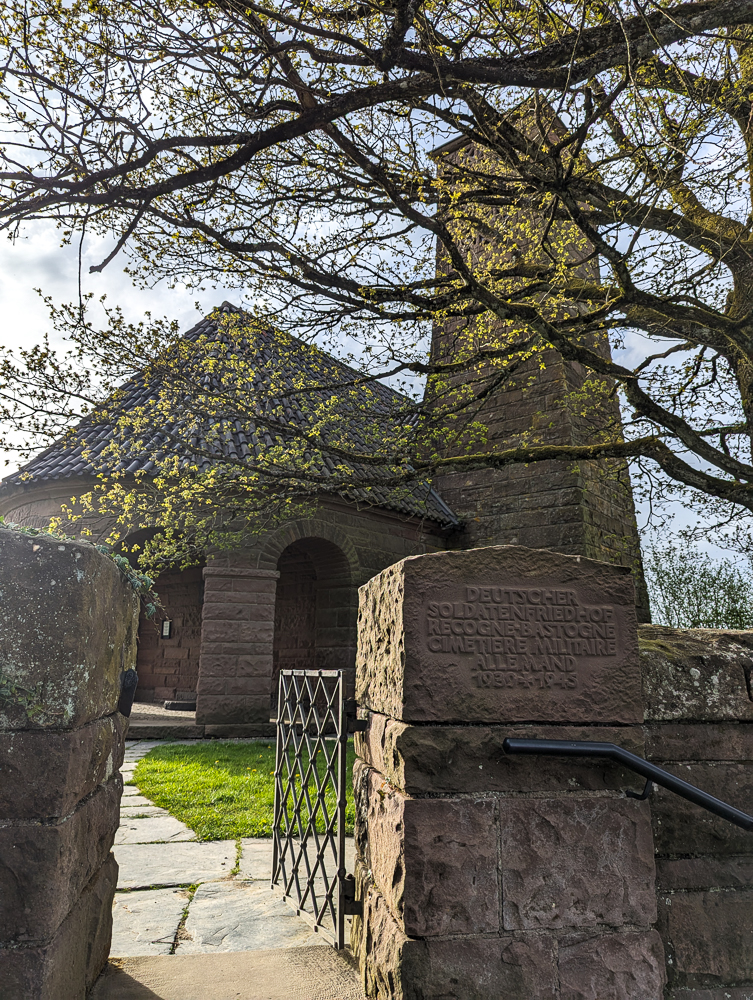

17. Tank Turret Monument
In the same grassy area as the Nurses Memorial you’ll find the turret of a tank used by the US 10th Armored Division’s Combat Command B–the first major combat unit to defend Bastogne.
This tank turret remains here as a monument to Colonel William L. Roberts and his three combat teams who, after delaying the initial German advance, joined the 101st Airborne for the remainder of the siege on Bastogne.

18. Bunker Assenois (Fortress Boggess)
Just off the road on the outskirts of town is Bunker Assenois (also called Fortress Boggess). Though this small concrete bunker predates WWII, this area marks an important Battle of the Bulge site. You can read all about it on the signs at this location (or here on this page.)
19. Le Nuts! Restaurant
After your time exploring all the WWII sites in Bastogne, it’s finally time to relax. Pop over to Le Nuts restaurant in McAuliffe Square for some chow and some WWII-inspired beer. The food here is delicious and the outdoor patio is a great place to hang out.
Inside the restaurant, the walls are filled with historical photographs and memorabilia, WWII-inspired artwork, and more. Why not order a Patton Le Général golden ale, brewed just 10 minutes away?


20. Brasserie Lamborelle
Just a block over from Le Nuts and McAuliffe Square is the Brasserie Lamborelle, another great place to grab some food (and beer). Among the many other great things they offer, this is the home of Airborne Beer–the only beer meant to be drunk from an army helmet.
Born from an anecdote from the Battle of the Bulge of a wounded soldier drinking beer out of an army helmet, Airborne Beer pays homage to the men who fought for freedom here in Bastogne. It comes in a couple of styles and is typically served in a mug shaped like an army helmet.
You can even buy a set that includes bottles of the beer and some helmet mugs, that all comes in an ammunition box. If I didn’t have five more weeks of traveling around Europe ahead of me, I absolutely would’ve come home with one of those!


Where to stay in Bastogne
During my few days in Bastogne I stayed at the Hotel Leo Station. The room was large and the staff was friendly. There’s a huge restaurant attached and parking was super easy, on site, and totally free. I’d definitely recommend staying here during your trip to all the WWII sites in Bastogne!
Fun fact: This hotel started out as a fry shop inside an Army tram carriage back in 1946.
Book your room at Hotel Leo Station here.

Resources for your visit to Bastogne’s WWII sites
- Hotels: Find great places to stay here on Booking.com (but Expedia and Hotels.com usually have good deals too). Check VRBO for rental properties.
- Rental cars: Check out the best Belgium rental car deals here.
- Travel planning: Pick up a Belgium guidebook and this super helpful Belgium customs and culture guide.
- For great local tours, check out all the options from Viator and Get Your Guide.
- Be sure to watch Band of Brothers and Monuments Men before your visit!
- What else have I covered in Belgium? Check out my Belgium archives.
Like this post? Have questions about your visit to Bastogne? Let me know in the comments below. Have fun in Belgium!

Save this info, pin this image:

